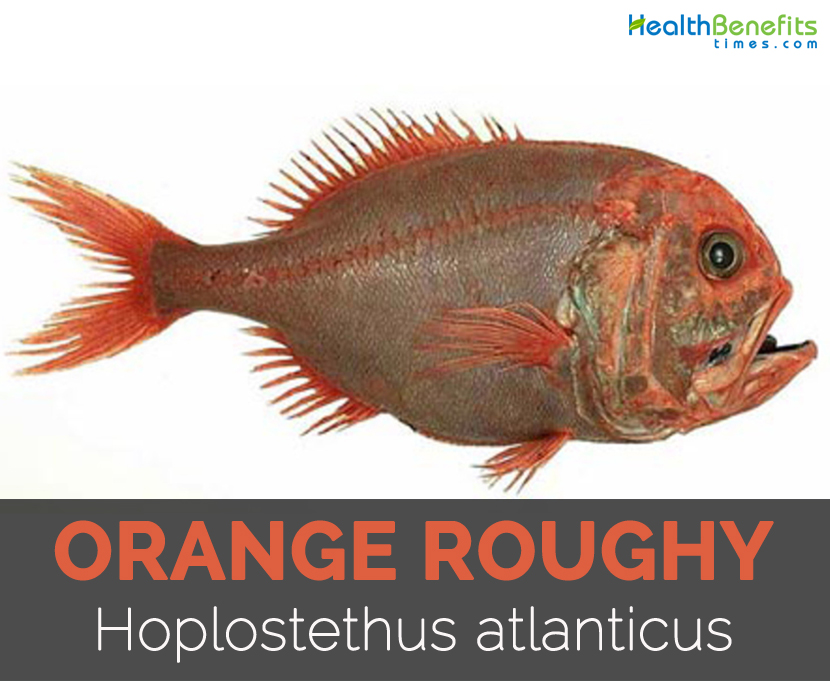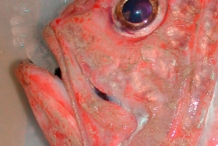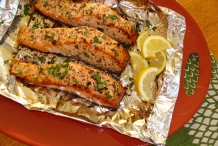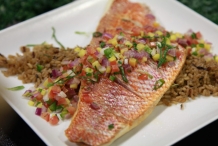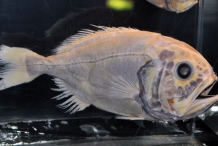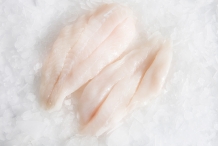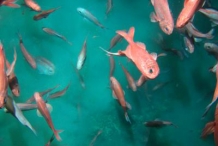Nutritional value
In 85 grams of cooked Orange roughy, we could find the nutrient contents such as 56.92 g of moisture, 89 calories, 19.24 grams of protein, 0.77 grams of total lipid fat and 0.84 grams of ash. The same serving size grants 75.1 µg of selenium, 0.899 g of isoleucine, 1.778 g of lysine, 0.875 g of threonine, 0.196 g of tryptophan, 0.921 g of valine, 1.527 g of leucine, 19.24 g of protein, 0.403 g of histidine, 0.4 µg of cobalamine, 87 mg of phosphorus, 0.96 mg of iron and 1.59 mg of vitamin E.
Health Benefits of Orange roughy
Orange roughy has bright red scales that could turn to black in order to resemble the color of cold waters that helps them to hide from predators. Due to the culinary uses in the recent decades, their population size has been decreasing. Orange roughy is loaded with various nutrients, vitamins, minerals, lipids and amino acids. When cooked, it has got mild flavor with flaky and delicate texture.
- Muscle health
Protein is essential for coordination and contraction of muscles. It is found in muscle tissues and provides structure of muscles. It is vital for making balance between breakdown muscle proteins and muscle protein synthesis. (1) (2) (3) (4) (5)
- Hair health
Protein is essential for the hair health and prevents damage of hair. The study shows that protein plays a vital role in the growth of hair. It is also used to manufacture the hair care products. (6) (7)
- Prevent anemia
It also treats megaloblastic anemia and pernicious anemia. Vitamin B12 is essential for restoring Intrinsic factor to maintain the blood normality.
- Maintain cells
Vitamin B12 helps to maintain various cells. It assists in the functions like repair, formation and maintains red blood cells that depend on Vitamin B12. It also takes care of nerve cells. It also maintains the nervous health.
- Bone health
Phosphorus is essential for the growth of teeth and bones. Along with calcium, it is essential for the formation of strong bones. It promotes the gum health and prevents tooth enamel. It provides relief from the health ailments such as bone loss or loss of mineral density called osteoporosis. It promotes the health of skeletal structure. (8) (9)
- Brain health
Phosphorus is essential for the brain cells. The adequate amount of phosphorus ensures cognitive development and growth as well as brain function. The study shows that deficiency of phosphorus helps to raise the chances of cognitive malfunction and conditions such as dementia and Alzheimer’s disease. (10)
- Regulates temperature of body
Iron helps to facilitate the temperature of body. It also stabilizes the body temperature that helps to assist the metabolic and enzymatic functions. (11)
- Transports oxygen
It helps to transport oxygen from one cell of the body to another. Iron has a vital role in this function to transport oxygen to every organ. (12)
- Assist digestion
Niacin assists the functions of human digestive system, function of nerves, promotes appetite and provides glowing skin.
- Lowers cholesterol
The high intake of Niacin helps to lower the LDL cholesterol and increase HDL cholesterol that prevents thickening of artery walls and conditions such as atherosclerosis.
Precautions
- Due to high content of mercury, the excessive intake of Orange roughy affects the brain function.
- It is not safe for breastfeeding and pregnant women as well as small children.
How to Eat
It is poached, baked, broiled and fried.
Other Facts
It is able to turn to the color of water in order to hide from predators.
References:
http://healthyeating.sfgate.com/effect-orange-roughy-health-9375.html
http://www.inlandseafood.com/seapedia/orange-roughy
https://www.organicfacts.net/health-benefits/vitamins/vitamin-b3-or-niacin.html
Comments
| Orange roughy facts Quick Facts | |
|---|---|
| Name: | Orange roughy facts |
| Scientific Name: | Hoplostethus atlanticus |
| Colors | Bright, brick red |
| Shapes | Round and large head, compressed, oval shaped, oblique mouth, large eyes ; Length: 75 cm (30 inches) |
| Flesh colors | White |
| Calories | 89 Kcal./cup |
| Major nutrients | Selenium (136.55%) Isoleucine (53.77%) Lysine (53.17%) Threonine (49.72%) Tryptophan (44.55%) |
| Health benefits | Muscle health, Hair health, Prevent anemia, Maintain cells, Bone health |
| Name | Orange roughy facts |
|---|---|
| Scientific Name | Hoplostethus atlanticus |
| Common/English Name | Red roughy, deep sea perch, slimehead, rosy soldier fish, range roughy, orange ruff |
| Name in Other Languages | Danish: soldatfisk; Dutch: keizerbaars, Atlantische slijmkop, Atlantische dorie; English: French: poisson-montre, hoplostèthe orange, hoplostète rouge, hoplostète orange, empereur; German: Kaiserbarsh, Kaiserbarsch, Granatbarsch, Degenfisch, Atlantischer sägebauch; Japanese: Orenzi-rafii, Hiuchidai; Lithuanian: islandinis pjūklapilvis beriksas; Modern Greek: Oplóstithos Atlantikoú (Οπλόστηθος Ατλαντικού); Russian: atlanticheskiy pilobryukh (атлантический пилобрюх); Spanish: reloj, Pez reloj anaranjado; Swedish: Lyktfiskar; Turkish: kırmızı imparator balığı; Ukrainian: Oranzhevyy khoplostet (Оранжевий хоплостет), Hoplostet oranzhevyy (Гоплостет оранжевий); Italian: Pesce specchio atlantico; Canada: Rosy Soldierfish |
| Lifespan | 149 years |
| Spawning | June and Early August |
| Scales | Ctenoid, adherent |
| Shape & size | Round and large head, compressed, oval shaped, oblique mouth, large eyes ; Length: 75 cm (30 inches) |
| Weight | 7 kg (15 lb) |
| Color | Bright, brick red |
| Flesh color | White |
| Fins | Pale orange |
| Predators | Deep roving sharks, merluccid hakes, cutthroat eels, snake mackerels |
| Diet | Carnivore, benthopelagic and mesopelagic prawns, squid, fishes, amphipods, mysids, viperfish, whiptails, lanternfish, crustaceans |
| Flavor/aroma | Delicate |
| Taste | Mild |
| Major Nutritions | Selenium, Se 75.1 µg (136.55%) Isoleucine 0.899 g (53.77%) Lysine 1.778 g (53.17%) Threonine 0.875 g (49.72%) Tryptophan 0.196 g (44.55%) Valine 0.921 g (43.61%) Leucine 1.527 g (41.31%) Protein 19.24 g (38.48%) Histidine 0.403 g (32.71%) Vitamin B-12 (Cobalamine) 0.4 µg (16.67%) |
| Health Benefits |
|
| Calories in 3 oz (85 gm) | 89 Kcal. |
| Precautions |
|
| How to Eat | It is poached, baked, broiled and fried. |
| Other Facts | It turns the body’s color to the color of water in order to hide from predators. |


